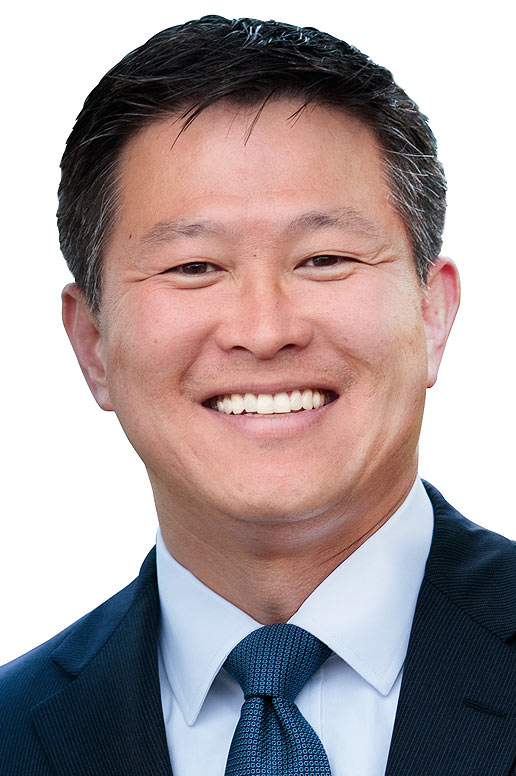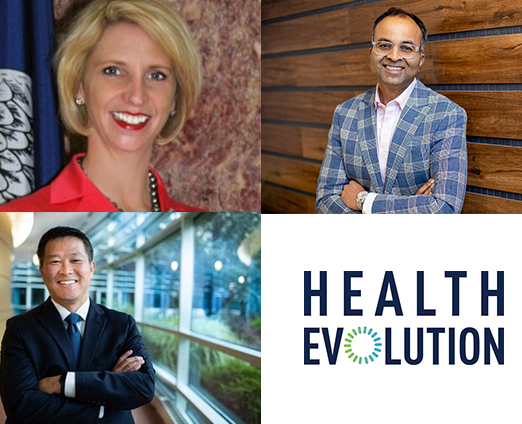The primary care system in America should not be a source of pride for any health care CEO.
“In a nutshell, primary care is probably not working well for anybody. It’s not working well for patients. It’s not working well for clinicians. And I think there’s an opportunity to get it so much better for all involved,” said Jaewon Ryu, MD, CEO of Geisinger Health System and a Co-Chair of the Health Evolution Forum Roundtable on New Models of Care Delivery. “If you look at outcomes measures and satisfaction, I think there’s a lot left to be desired.”
A study from researchers at Brigham and Women’s Hospital and Beth Israel Deaconess Medical Center revealed that fewer Americans have primary care than ever before. Those who are engaged with the primary care system are less satisfied, according to data collected by the Reinventing Primary Care and Preventative Care Models Work Group. Moreover, Ryu said that providers are burned out having amassed an unsustainable workload of an average of 24-30 patients per day.

Jaewon Ryu, MD
“There’s a notion of feeling like they’re on a hamster wheel and feeling like they can’t spend adequate time with their patients in order to maintain a sustainable practice,” Ryu said. Through a specific initiative, Geisinger reduced the number of patients its primary care physicians saw and the result was that patient satisfaction went up and turnover rate among providers went down.
Ryu along with Reinventing Primary Care and Preventative Care Models Co-Chairs, Gaurov Dayal, MD, President & COO, EversideHealth and Rebekah Gee, MD, CEO, Health Care Services, LSU Health, discussed the challenges of the current primary care system and potential best practices to create a next-generation primary care system during the Health Evolution Forum Town Hall virtual event
Five practices for next-generation primary care
The Reinventing Primary Care and Preventative Care Models Work Group came up with five potential practices for next-generation primary care:
Stratifying the panel into unique person segments. Dayal said that primary care doctors typically see “all comers,” a situation that often leads to burnout and them having to churn out patient visits. By creating segmentation, primary care clinicians can refine practice scope and goals. Patients can be stratified not just by disease state, but via payment model as well. One question that practices will have to ask themselves when stratifying patient patients into segments is how much outsourcing they will need to achieve their goals, he said.
Crafting a multi-channel engagement approach. Virtual care has taken off in the last year, thanks to COVID-19. For primary care, this could mean using various engagement channels – email, text, phone, app, virtual – in alignment with a person or segment’s needs. However, such a multi-channel engagement approach does bring challenges. “There are a lot of solutions out there, but I think one thing that’s lacking is an aggregation point for a lot of these solutions. And in its worst, it can actually further fragment primary care if people start using these [solutions] as sort of a quasi-urgent care model,” he said.
Building the care coordination enterprise. To the point of having multiple different sources of care—whether virtually or in person—this happens at the primary care level, Dayal said. That means next generation primary care enterprises must bring together different encounters and data streams in a way that creates meaningful results and can lead to higher engagement, better outcomes, and lower costs. This is especially important, he said, for a senior-focused population with multiple chronic diseases.
Compensating for quality and outcomes. For those who are operating in a hybrid reimbursement model, Dayal noted that capitation and fee-for-service include very different ways to pay physicians, collect revenue and use technology to garner that revenue. While many health systems have these merged models, he said trying to do everything is only going to get harder and harder. Segmentation that addresses varying reimbursement needs is something practices should consider, Dayal said.
Investing to foster prevention. “While we’re building the new model of primary care, we have to think about how to invest in capabilities to operationalize a model that we often haven’t even built yet. I think it just makes this that much more complicated,” Dayal said. He used the example of community health workers, which are often needed in underserved communities to improve engagement and outcomes. Investments in these workers, initiatives and partnerships are going to be requirements in the next generation of primary care models.
Dayal noted that undertaking significant transformation like this is a heavy lift and it comes with risk. Most health systems are heavily still in fee-for-service mode and despite disruptions from the pandemic, “life will go on,” he noted. That means health care leaders need to ask themselves if they are truly willing to lead this migration.
Bigger picture problems
Looking at the bigger picture, Gee said that COVID has been the stress test for the health care system, in particular primary care, shedding light on “our greatest vulnerabilities as well as our greatest opportunities.”
She called out the health care industry for deficiencies in treating mental health, the lack of quality metrics in maternal and mental health as well as virtual care models, a struggle with the diversity and composition of the workforce, an inability to reduce disparities of care, the burnout of physicians and other clinicians, a dearth of data liquidity, and a Medicaid program that is “lagging behind greatly.”
“About half of our pregnant women and children in this country are covered by Medicaid. We are missing opportunities to make early investments that would lead to the greatest long-term benefits and we’re paying for them later in Medicare,” Gee said.
In terms of potential opportunities, Gee added that there is a need for continuity of coverage to give people the ability to make the changes in their lives they need to be healthy, similar to what’s being done on Medicare Advantage. Stable financing, accurate patient attribution, and alignment of public programs for vulnerable populations are also pressing issues.
“The private sector needs to help create these models for alignment and advocate for how they should look. What does a relationship between housing, food assistance, public safety, environment, and health look like? I think we’re going to need to innovate and help to create these models,” said Gee.











